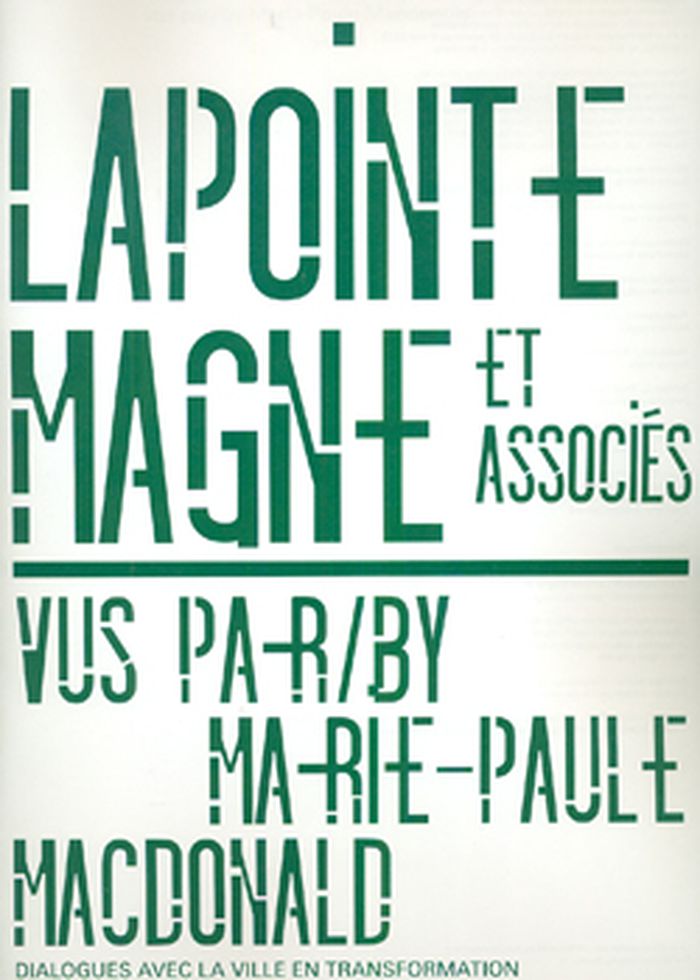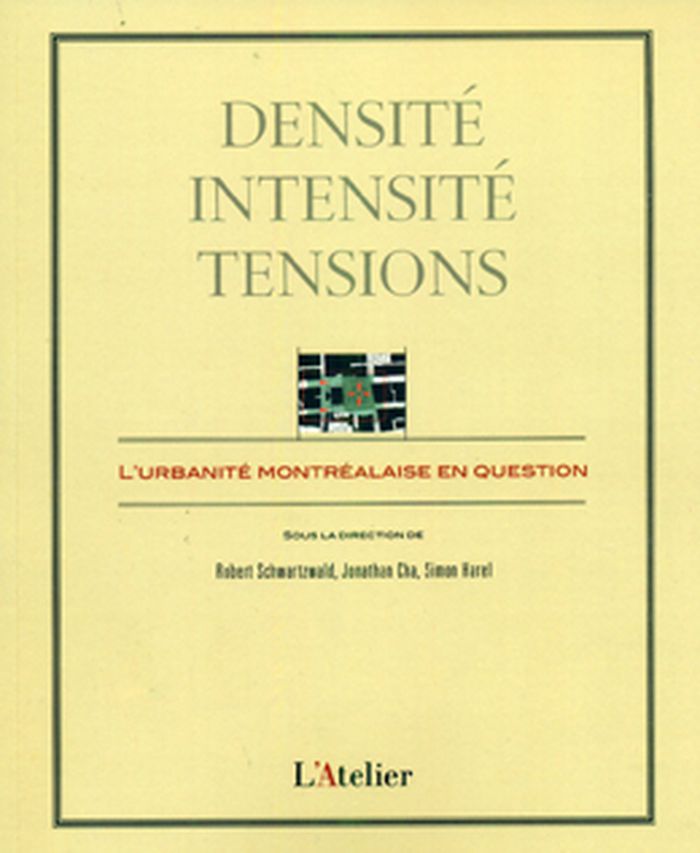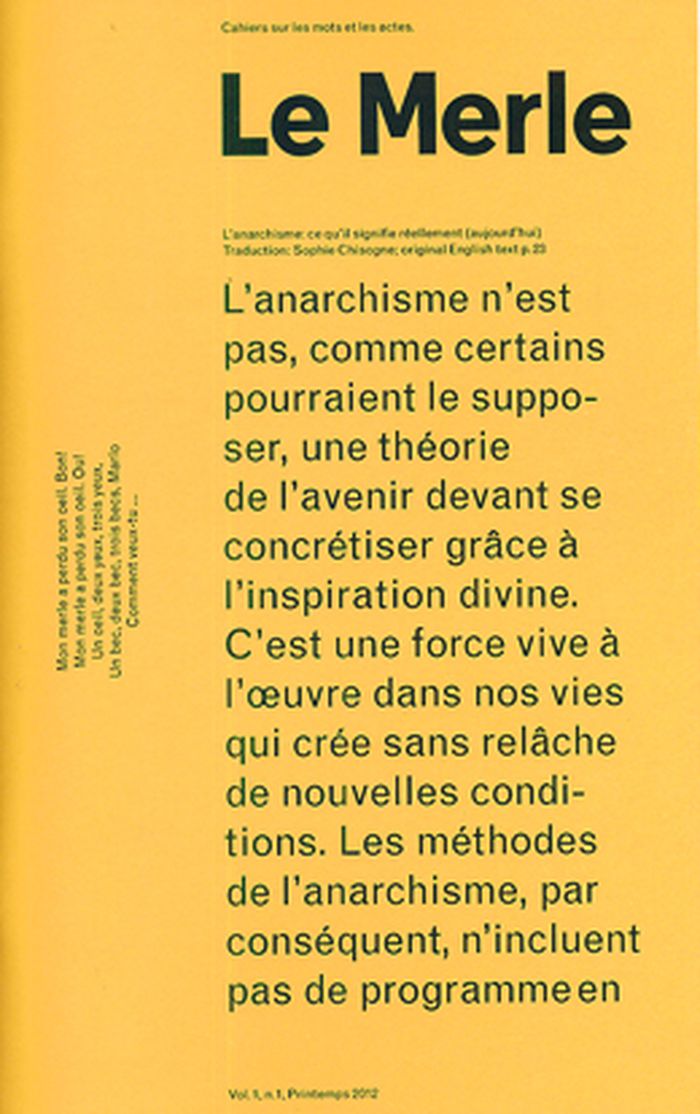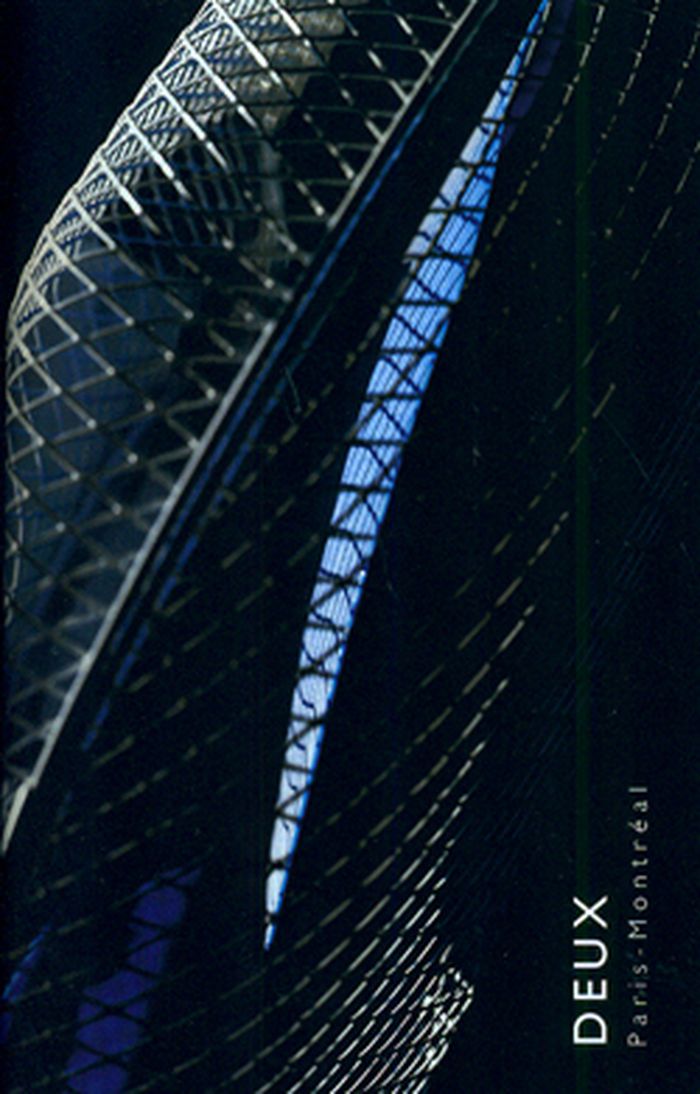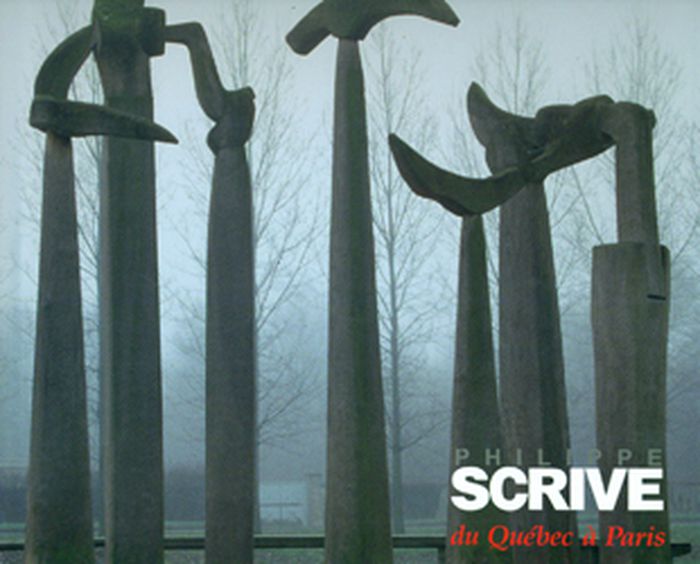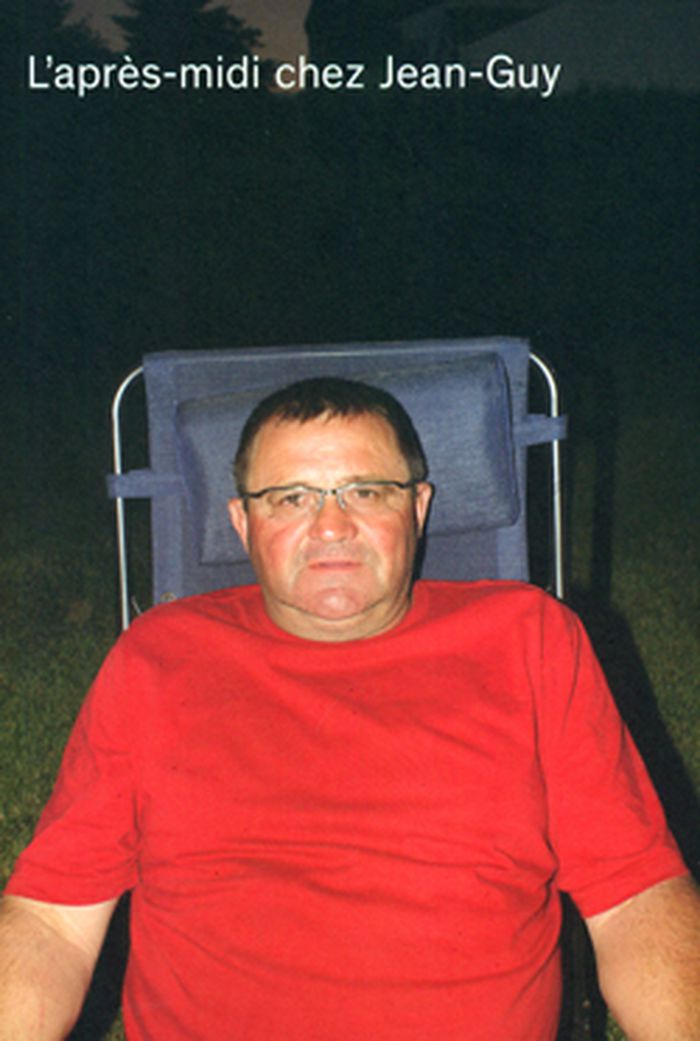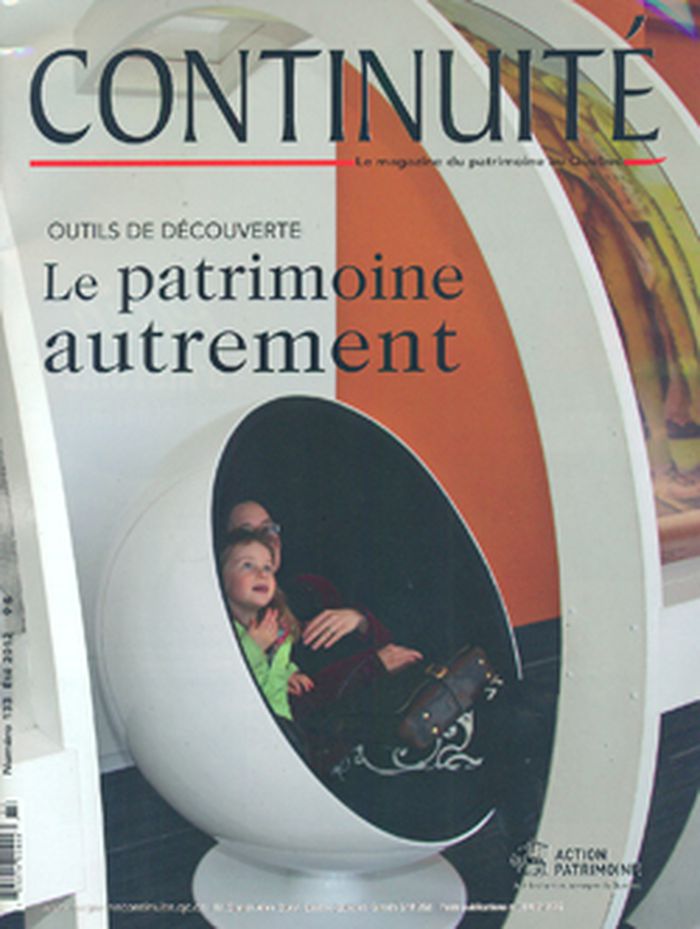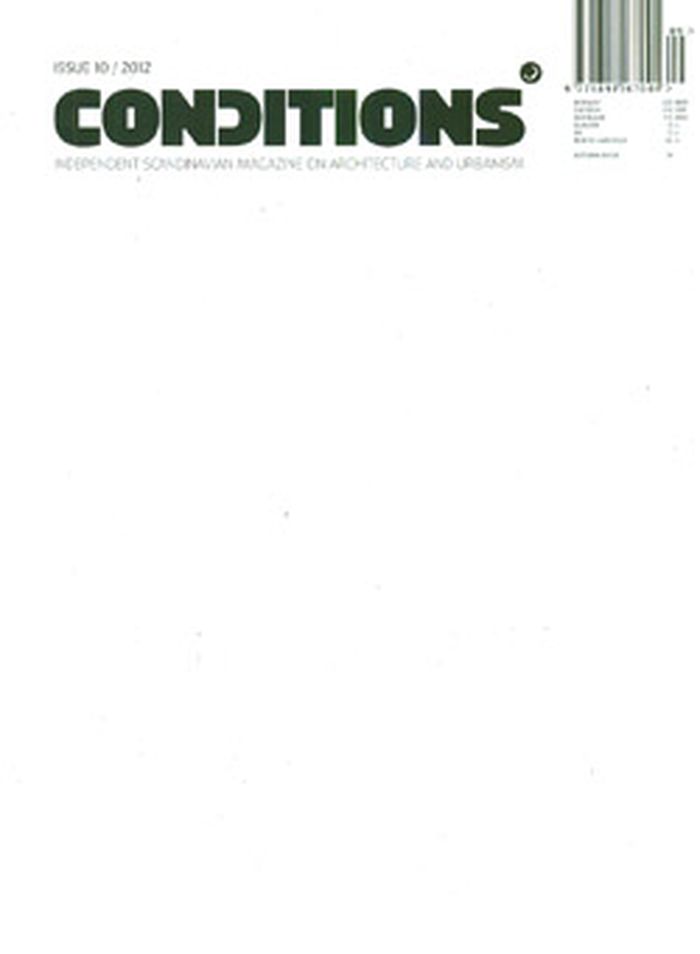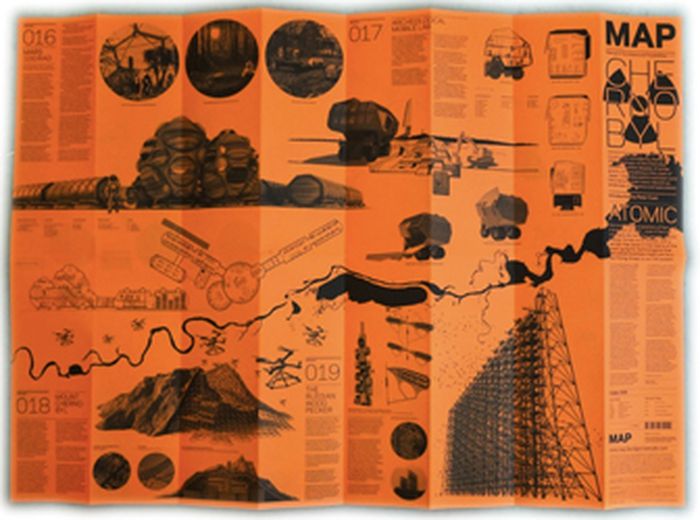$25.00
(available in store)
Summary:
Les Monographies MAQ : un architecte, un commissaire, une exposition, une publication. Cette initiative monographique est la deuxième d'une série par laquelle la Maison de l'architecture du Québec veut analyser en profondeur le travail d'architectes québécois marquants des années 1995-2015, et mieux les situer et comprendre dans le contexte international.
Lapointe, Magne et associés vus par /by Marie-Paule MacDonald : dialogues avec la ville en transformation
Actions:
Price:
$25.00
(available in store)
Summary:
Les Monographies MAQ : un architecte, un commissaire, une exposition, une publication. Cette initiative monographique est la deuxième d'une série par laquelle la Maison de l'architecture du Québec veut analyser en profondeur le travail d'architectes québécois marquants des années 1995-2015, et mieux les situer et comprendre dans le contexte international.
$20.00
(available to order)
Summary:
«Est-ce que les Montréalais peuvent faire autre chose que d'être gentils, c'est-à-dire mettre en tension de l'intensité et de la densité? Nous le croyons totalement. Il y a un bruit de fond montréalais. Il y a un buzz montréalais, quelque chose de profondément métropolitain dans cette ville. Ce qu'on voudrait cerner, c'est comment ça se manifeste de manière à la fois(...)
March 2012
Densité, intensité, tensions : l'urbanité montréalaise en question
Actions:
Price:
$20.00
(available to order)
Summary:
«Est-ce que les Montréalais peuvent faire autre chose que d'être gentils, c'est-à-dire mettre en tension de l'intensité et de la densité? Nous le croyons totalement. Il y a un bruit de fond montréalais. Il y a un buzz montréalais, quelque chose de profondément métropolitain dans cette ville. Ce qu'on voudrait cerner, c'est comment ça se manifeste de manière à la fois organisée et désorganisée.»
$10.00
(available in store)
Summary:
Le Merle est une publication semi-annuelle qui rassemble des textes et des oeuvres qui ont en commun de jalonner le politique et la formation du Sujet à travers l'art, l'écrit et les pratiques d'exposition. Cette édition du Merle inclut L’anarchisme: ce qu’il signifie réellement (aujourd’hui: un texte de Emma Goldman révisé et abrégé par Heather Davis, La géométrie du(...)
Le Merle: cahiers sur les mots et les actes Vol. 1, n. 1, Printemps 2012
Actions:
Price:
$10.00
(available in store)
Summary:
Le Merle est une publication semi-annuelle qui rassemble des textes et des oeuvres qui ont en commun de jalonner le politique et la formation du Sujet à travers l'art, l'écrit et les pratiques d'exposition. Cette édition du Merle inclut L’anarchisme: ce qu’il signifie réellement (aujourd’hui: un texte de Emma Goldman révisé et abrégé par Heather Davis, La géométrie du hasard par Richard Ibghy & Marilou Lemmens, En entrevue: Le temps de l’oeuvre, le temps de l’acte: Entretien avec Bernard Aspe par Érik Bordeleau, Our Literal Speed par Abbey Shaine Dubin (en anglais), un projet inédit de Simon Brown, Institutional Critique Flair Button* de Charles Gute ainsi qu'un texte de Érik Bordeleau produit dans le cadre de Zoo 2011: Se faire une âme anonyme: Itinéraire pratique. Le Merle is a semiannual publication presenting texts and works that share an interest in delineating the political and the formation of the Subject through art, writing and exhibition practices. This issue includes : Anarchism: What It Really Stands For (Today): Edited and abridged by Heather Davis, The Geometry of Chance by Richard Ibghy & Marilou Lemmens, The Time of the Work, the Time of the Act: an interview with Bernard Aspe, a project by Simon Brown, Our Literal Speed by Abbey Shaine Dubin, Institutional Critique Flair Button* by Charles Gute, To Make One's Soul Anonymous: Practical Itinerary by Érik Bordeleau.
Montréal-Paris:UN
$12.00
(available in store)
Summary:
Montréal-Paris est le fruit d'une collaboration photographique entre Thomas Bouquin et Pascal Amoyel, tous deux à la recherche d'une forme capable de donner à voir leur ville respective. Tiré à 100 exemplaires et numéroté, UN est le premier de 6 chapitres périodiques destinés à former un livre.
January 2012
Montréal-Paris:UN
Actions:
Price:
$12.00
(available in store)
Summary:
Montréal-Paris est le fruit d'une collaboration photographique entre Thomas Bouquin et Pascal Amoyel, tous deux à la recherche d'une forme capable de donner à voir leur ville respective. Tiré à 100 exemplaires et numéroté, UN est le premier de 6 chapitres périodiques destinés à former un livre.
Montréal-Paris: DEUX
$12.00
(available in store)
Summary:
Montréal-Paris est le fruit d'une collaboration photographique entre Thomas Bouquin et Pascal Amoyel, tous deux à la recherche d'une forme capable de donner à voir leur ville respective. Tiré à 100 exemplaires et numéroté, DEUX est le second de 6 chapitres périodiques destinés à former un livre.
February 2012
Montréal-Paris: DEUX
Actions:
Price:
$12.00
(available in store)
Summary:
Montréal-Paris est le fruit d'une collaboration photographique entre Thomas Bouquin et Pascal Amoyel, tous deux à la recherche d'une forme capable de donner à voir leur ville respective. Tiré à 100 exemplaires et numéroté, DEUX est le second de 6 chapitres périodiques destinés à former un livre.
$70.95
(available in store)
Summary:
Cet ouvrage présente le travail artistique de Philippe Scrive, sculpteur. Préface de Pierre Descargues et biographie de Marguerite Scrive.
Philippe Scrive: du Québec à Paris
Actions:
Price:
$70.95
(available in store)
Summary:
Cet ouvrage présente le travail artistique de Philippe Scrive, sculpteur. Préface de Pierre Descargues et biographie de Marguerite Scrive.
Consignment
L'après-midi chez Jean-Guy
$15.00
(available to order)
Summary:
Cet ouvrage présente des objets conçus ou altérés par Jean-Guy Campeau. L’après-midi chez Jean-Guy (Afternoon at Jean-Guy’s) is a booklet by Maxime Harvey and Isabelle Campeau. Jean-Guy lives in a suburb near Montreal. The photographs are documentation of various objects that Jean-Guy made out of existing objects, packagings or waste. From a water heater to various type(...)
L'après-midi chez Jean-Guy
Actions:
Price:
$15.00
(available to order)
Summary:
Cet ouvrage présente des objets conçus ou altérés par Jean-Guy Campeau. L’après-midi chez Jean-Guy (Afternoon at Jean-Guy’s) is a booklet by Maxime Harvey and Isabelle Campeau. Jean-Guy lives in a suburb near Montreal. The photographs are documentation of various objects that Jean-Guy made out of existing objects, packagings or waste. From a water heater to various type of stilts, these patched objects seem mundane but they demonstrate many uses and diversions of everyday life that are not often documented. Édition de 200
Consignment
$9.00
(available to order)
Summary:
Les outils de découverte du patrimoine sont conçus pour révéler la richesse de notre héritage et l’importance de le sauvegarder. Quand on crée un parcours patrimonial, on transforme « des lieux anonymes, interchangeables, en des lieux d’identité, d’histoire, de sens », comme le dit Pascale Marcotte dans les pages de ce numéro. Alors que célébrer des savoir-faire, des(...)
Consignment
June 2012
Continuité 133, été 2012: le patrimoine autrement
Actions:
Price:
$9.00
(available to order)
Summary:
Les outils de découverte du patrimoine sont conçus pour révéler la richesse de notre héritage et l’importance de le sauvegarder. Quand on crée un parcours patrimonial, on transforme « des lieux anonymes, interchangeables, en des lieux d’identité, d’histoire, de sens », comme le dit Pascale Marcotte dans les pages de ce numéro. Alors que célébrer des savoir-faire, des pratiques, des sites ou un cadre bâti, c’est perpétuer la mémoire et inscrire la fête populaire comme un legs de la continuité. Continuité présente certains de ces instruments essentiels et cherche à en cerner le potentiel.
Consignment
Conditions 10: why gossip?
$29.99
(available to order)
Summary:
The current issue of Conditions investigates the function of gossip in architecture. Gossip has always been around in architecture as one of the oldest ways of sharing, maneuvering and convincing. But how does it manifest itself today within the instant culture of internet and social media? What is the role of gossip in contemporary networking? Has the logic of gossip and(...)
July 2012
Conditions 10: why gossip?
Actions:
Price:
$29.99
(available to order)
Summary:
The current issue of Conditions investigates the function of gossip in architecture. Gossip has always been around in architecture as one of the oldest ways of sharing, maneuvering and convincing. But how does it manifest itself today within the instant culture of internet and social media? What is the role of gossip in contemporary networking? Has the logic of gossip and instant gratification also penetrated what we used to call architectural critique?
MAP 005 : Chernobyl
$11.95
(available to order)
Summary:
This issue charts the history of major nuclear accidents, focusing on the Chernobyl reactor 4 explosion of 1986, mapping a minute by minute description of the events on nuclear plant cut-outs and info graphics. From its medical implications to the social impact of the accident and articles and input from scientists, this issue offers a wide spectrum of commentaries on the(...)
MAP 005 : Chernobyl
Actions:
Price:
$11.95
(available to order)
Summary:
This issue charts the history of major nuclear accidents, focusing on the Chernobyl reactor 4 explosion of 1986, mapping a minute by minute description of the events on nuclear plant cut-outs and info graphics. From its medical implications to the social impact of the accident and articles and input from scientists, this issue offers a wide spectrum of commentaries on the implications of radiation in this scarred landscape. The project page investigates various scenarios; an astrobiology testing base, the reuse of the massive "Woodpecker" ex-soviet antenna into a migratory bird feeding ground, a mobile archeology lab for radioactive landscapes and Mount Chernobyl, an alternative to the new sarcophagus for the damaged reactor.
Consignment
